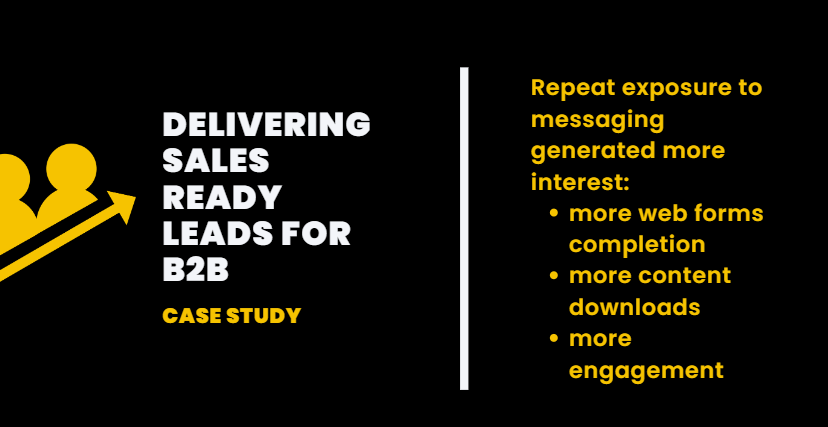Creating useful content that makes your audience keep coming back for more isn’t an easy task. But it’s an activity that pays off in the long run. As much as 70% of marketers are actively investing in content marketing, according to Hubspot. But how often do we actually go back to our posts and check if they are still interesting and up-to-date?
Google rewards those websites that regularly update content by displaying them higher in the search results (check this Freshness Algorithm Update Google released if you don’t believe me).
Making your content relevant by answering your buyer persona’s most pressing pain points can be daunting, even for experienced marketers. No need to feel overwhelmed here!
A valuable research conducted by Semrush highlights these 3 major challenges content marketers around the world face:
- creating content that generates quality leads (54%)
- creating content that attracts more traffic (52%)
- developing content that resonates with their target audience (45%)
*inner voice* Challenge accepted!
Jokes aside, I really hope these facts will motivate you to start analyzing your published content and re-think this year’s content strategy.
Don’t worry, we’ve got you covered with an easy to follow guide covering topics such as:
- What is a content audit?
- What makes for a successful content audit?
- Three important steps to guide your process
- What should you do with underperforming or outdated content?
- Tools to speed up the content auditing
Let’s begin!
What is a content audit?
A content audit describes the process of collecting and analyzing assets on a website, such as web pages, case studies, news, or blog posts. It helps you keep an inventory of your website and provide insights into which content to create, update, re-write, or delete.
What makes for a successful content audit?
Performing content audits at least once a year can help guide your content marketing strategies into different directions that will appeal to your targeted audiences, improve text for better organic reach, and boost conversion rates.
A successful and well-executed audit will always tell you what’s working for you, what isn’t, and where to improve.
PRO TIP: If time is not your best friend you can complete only small sections of the audit or pay for tools that help you automate parts of the research. Scroll below for our tools recommendations.
Three important steps to guide your process
With no clear picture of whether or not you’re on the right track, it’s easy to feel stuck. A three steps easy to follow would like something like this:
- Define goals and metrics
- Take an inventory of the content and assess it
- Build an editorial calendar
STEP 1: Define goals and metrics
Whatever the case of your audit may be, being clear about your intentions ahead of time will definitely streamline the process and minimize the effort spent. Some goals you might want to consider:
Goal #1: Increase Audience Engagement
Performance metrics: Likes, Comments, Mentions, Social shares, Backlinks, Page Views, Average Sessions Duration, etc.
Main actions:
- Discover the most engaging types of content for your audience
- Research topics your visitors are interested in
- Determine what kind of content generates the most social engagement
Goal #2: Improve Conversion Rate
Performance metrics: Page Views, Average Session Duration, Bounce Rate, Number of leads, Conversion Rates, ROI
Main actions:
- Learn which pages offer the best user experience for your visitors
- Discover the content that generates the most leads
- Determine the most efficient content types for each stage of the buyer’s journey
Goal #3: Improve Your SEO Results
Performance metrics: Organic Traffic, Backlinks, Keyword Rankings, Dwell Time
Main actions:
- Identify web pages with high SEO potential to rank in the top 10
- Understand what content you need to update or remove from your website
- Check and optimize your internal linking.
Goal #4: Plan for a website redesign
Performance metrics: Backlinks, Page views, Average Session Duration
Main actions:
- Identify where you need to setup URL redirects
- Learn what past content pieces you’d want to display more prominently on your new site
- Discover how you can optimize your content to gain higher qualified traffic
Recommended Reading: How to create & track goals in Google Analytics
STEP 2: Take an inventory of the content and assess it
Next, you’ll want to create a content marketing inventory worksheet that lists all of your on-site pages and posts so you can see what assets you already have. What are we looking for?
- Types of content: eg. lead generation page, blog post, case study, customer story, generic web page, company updates.
- Content that is underperforming and can be optimised / repurposed in order to gain more traffic.
- Content that is outdated and should be reviewed to check if the information is still relevant and can be re-written or just deleted.
- If on-page SEO main elements are in place (targeted keyword, H1, meta description, images with alt text).
- Metrics such as social shares, backlinks and sessions paint a clear picture into how your content is performing.
- Broken internal or external links

You can organise content based on the following categories:
- Basic info (# words, when was updated, author)
- Format & next steps (what type of content is, what format, what should be done next)
- Metadata (title, meta description, h1)
- Metrics (depending on your content audit’s goal, here you should include top performance metrics)
Here’s how your header of your content inventory might look like:
The not-so-fun part begins. Populating the inventory, collecting and analyzing data can quickly become a complex process. If you want to save time, use a content audit tool that automatically pulls all the data.
Next, you’ll want to evaluate each piece of content and assign one of the following labels:
- Keep if your content is performing well and it’s relevant
- Update if your content needs adjustments in order to perform better
- Delete if your content can’t be improved or it wouldn’t worth the effort
STEP 3: Build an editorial plan
Pat yourself on the back, you’ve done a really amazing job! Collecting all that information, cataloguing them and taking big decisions regarding your published content is a lengthy and time consuming process. Trust me, soon it will be worth the effort.
Your final step is to prioritize your content creation. Use a content calendar and make sure to touch upon:
- Title, format, keywords targeted
- Targeted buyer persona and what stage of their journey this content addresses
- Link to it and if the content can be repurposed
- Who’s responsible for it, status and notes
Should look like this:
PRO TIP: Your content creation process should focus on answering the questions of your buyer persona and at the same time, the relevant topics for your business.
As you already discovered, research is a big part of coming up with a great content strategy.
If you don’t know how to get started with content ideas, we published an article dedicated to building a content strategy.
What should you do with underperforming or outdated content
Outdated content – what to do
Through the content audit, you will most likely discover articles that are not performing well – they attracted few visitors, little to no social media shares. What you could do is review those articles in order to make them more effective – explain a topic better, include more recent data and examples, write more compelling titles, introduce visuals to make the content more skimmable.
Outdated information is another reason why you should revise your content. If you find articles about trends, studies with data, tools, and resources type of articles – those could be good targets to update.
When a piece of content can’t be improved or an update would mean too much effort, the best thing to do is to remove it from your website.
Big shout to those articles or landing pages created for seasonal marketing campaigns. I’m pretty sure you no longer need them.
Examples: content related to a particular event or activity, information about out-of-stock products, duplicate content, which always should be avoided.
Content might be underperforming – 7 ideas to consolidate it
Ok, ok, understood with the outdated one. What should you do if your content needs adjustments in order to perform better?
Enjoy these quick tips to skyrocket it (you’ll thank me later???? )!
- Structure your content. A clear and logical structure can help users and bots better interpret your content. You can try to group content that tackles a single broad topic under a pillar page.
A pillar page covers all aspects of a main topic on a single page, with room for more in-depth reporting in cluster blog posts that hyperlink back to the pillar page.
- Add or update your CTAs. You can have some outdated call-to-actions on your blog or other web pages. Updating or even replacing them with new offers can help reactivate your content marketing funnel and improve your conversion.
- Add images, gifs, or videos. By integrating videos and images on a web page, you increase the chances to appear in SERP features. According to studies, by 2021 video is poised to account for 82% of all internet traffic. Not to mention that users spend more time on web pages containing a video.
- Repurpose your content. Try to combine different pieces of content to create another one or publish it in a different format (ebook, infographics, slides, etc.).
Examples: evergreen content, FAQs, basic information on your business.
- Improve long-tail keyword use and optimize metadata. Rewrite your titles, meta descriptions and H1. Adjust content to match user intent, make it more attractive for users and include four or more very specific keywords. Remember, title tags should be 50-60 characters and meta descriptions should be 155-160 characters long for readability.
- Optimize internal linking. Add links pointing to new articles in blog posts with related topics. It can help to improve your website architecture and decrease your bounce rate.
- Optimize headlines to boost CTR and create customer-centric Value Propositions. Make sure your headline delivers on its promise to your audience! Also, your copy should always highlight the benefits your offer has and the pain points it relieves.
Need more inspiration? Read 31 Best Value Proposition Examples and start drafting your message so that every website visitor turns into a valuable lead.
Tools to speed up the content auditing
I’ve mentioned before that if you want to accelerate your process and save time, it’s better to use tools that automatically collect & interpret data. So, here are our top 5:
- SEMrush Content Audit tool – audits your website content and provides you with various data, such as social shares, backlinks, metadata, content authors, and content length for each URL.
- Screaming frog – helps you improve onsite SEO, by extracting data & auditing for common SEO issues (free for first 500 URLs). Use this information for your inventory.
- MOZ Open Site Explorer – this highly accurate link tool lets you check the backlink profile and Domain Authority of any site.
- Google Analytics and Google Search Console provide in-depth insights into your website and SEO performance. Use this information to track KPIs like conversions, website traffic, and backlinks.
- AnswerThePublic – It provides you with all the questions people are searching for around a specific topic. Not only will this help you build out your topic cluster, but it can also help you identify what’s relevant to your audience.
Pro Tip: If your priority is turning your website into a lead generation engine and start attracting the right audience, check this list of 8 elements worth experimenting with on your landing page and 7 examples we love
Time to audit your content!
Ready to boost the performance of your content and the conversions it generates?
All you have to do is: (1) pull a list with all your webpages, (2) evaluate them to find anything that needs optimization and (3) fix them with your team.
Begin a content audit with what you learned today or get in touch with one of our specialists.






